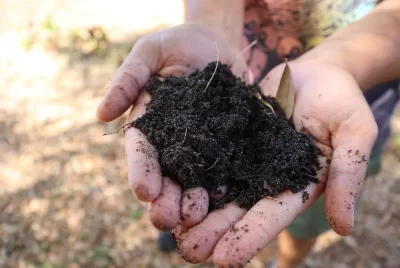Tilling Forks: How to Use, Tips & Techniques for Gardeners
Overview of Tilling Forks and Their Uses

A tilling fork, often also known as a digging fork, is a powerful and efficient tool in the world of gardening. Unlike standard pitchforks, these are usually endowed with thicker and more robust tines that can endure tough soil and heavy-duty work.
Advantages of Utilizing Tilling Forks in Your Garden
When it comes to gardening, having the proper tools at hand can improve productivity and result in a more flourishing garden. A tilling fork is no exception. It’s incredibly versatile in terms of its application within the garden
Some of the key benefits of employing a tilling fork in your usual gardening routine include:
- Loosening compacted soil: Compacted soil can be incredibly detrimental to your plants’ growth, preventing water, air, and essential nutrients from reaching the roots. A tilling fork is perfect for breaking up such soil, aiding in the overall aeration process. For more on the benefits of broadforks in reducing soil compaction, refer to this UMN Extension study.
- Digging through hard and rocky soil: With its strong tines, a tilling fork can break up hard or rocky soil surface more easily than other gardening tools.
- Mixing compost or mulch with soil: A tilling fork can mix compost or mulch into your garden soil, enriching it with essential nutrients and improving its structure.
Well-Defined Instructions on How to Use a Tilling Fork
Operating a tilling fork isn’t complicated, but it’s critical to use it correctly to get the best out of its benefits and avoid causing harm to you or your garden.
Step-by-Step Guide for Successful Tilling
First, grasp the handle firmly with both hands, keeping the tines pointed downward and the handle angled slightly away from your body. Then, drive the tines into the soil, using your foot if necessary for added force. You can then lever the handle to break the soil up and turn it over. Remember to take frequent breaks to prevent muscle strain.
In the following, we discuss a few essential steps for successful tilling:
- Identify the area of soil to be tilled. This could be a new garden bed or a patch of soil that needs loosening or aeration.
- Choose the right tilling fork according to the nature of your task and the type of soil—robust tools with strong, sharp tines for hard, rocky or clayey soils; lighter forks for sandy or loamy soils.
- Place the tines at a 45-degree angle to the soil surface and push them into the ground, using your foot on the shoulder of the fork for added force.
- Once the tines are fully in the soil, use the handle to lever the tool backward, breaking up the soil clods and turning the soil over.
- Move progressively along the area to be tilled, ensuring the soil is evenly turned and broken up.
Ensuring Safety While Operating Tilling Forks
Safety is always paramount, especially when using a garden tool like a tilling fork. Besides using the tool correctly, wearing protective clothing such as garden gloves and sturdy shoes. Also, always keep the fork out of the reach of children when not in use.
Rewarding Techniques in Using Tilling Forks
<p>Tilling forks can truly make a difference in your gardening experience when used with the right technique. Let’s take a closer look at some of the best practices that can help you make the most of your tilling fork.
Technique 1: Composting and Aeration
By mixing organic material into the soil, your tilling fork can improve its water-holding capacity and facilitate the passage of air to the plant roots.
Here’s a step-by-step guide on how you can accomplish this:
- Start by piling up your compost on a flat surface, and then spread it evenly over the area you wish to till.
- Next, use your tilling fork to puncture the compost and underlying soil, and twist it a bit to integrate the compost into the soil.
- Repeat the process until the compost is well-dispersed within the soil, aiming for a depth up to six inches.
Technique 2: Nourishing Soil with Nutrient-Rich Compost
In order to provide your plants with essential nutrients, adding nutrient-rich compost to your garden soil is key. Your tilling fork is an excellent tool for this task.
Here’s how to do it:
- Prepare your compost, ensuring it is well-rotted and crumbly.
- Spread a thick layer of compost over the soil you wish to enhance. Aim for a depth of around two inches.
- Use your tilling fork to integrate the compost into the soil, working it in thoroughly to ensure an even distribution.
Technique 3: Garden Bed Preparation
Your tilling fork is your best friend when it comes to preparing a new garden bed. Here’s a detailed guide:
- Begin by marking out the size and shape of the bed. Use a string line if necessary to ensure straight edges.
- Clear the area of any plants or weeds.
- Use your tilling fork to loosen the soil within the marked area, working it over thoroughly to a depth of at least six inches.
- Finally, add compost or manure and use your fork to mix it into the loosened soil.
Comparison Between Tilling Forks and Other Gardening Tools
Discover the distinct benefits of a tilling fork compared to other classic gardening tools. Below are comprehensive comparative analyses between tilling forks, garden spades, and rakes.
Comparative Analysis: Tilling fork vs. Garden Spade

| Tool | Garden Spade | Tilling Fork |
|---|---|---|
| Purpose | Primarily for cutting & digging | Loosening, lifting and turning soil |
| Effectiveness | Fare well with denser soils | Especially useful for breaking up clumpy and hard soils |
| Strength | Tends to be robust and sturdy | Strong and rugged for intense tilling |
| Flexibility | Limited to digging, cutting | Versatile – useful for mixing compost, aeration, tilling |
| Nature | More of a cutting tool | More of a soil manipulation tool |
Comparative Analysis: Tilling Fork vs. Rake
![]()
A rake is a wonderful tool for gathering and smoothing out loose material such as leaves or grass cuttings, but its capacity to work with solid ground is limited. On the other hand, a tilling fork is designed to penetrate and break up compact soil, making it a much more effective choice for tasks like aeration, mixing in compost, or preparing garden beds.
Product Reviews: Top Tilling Forks for Gardeners
When it comes to tilling forks, there’s a multitude of brands and models to consider. Below, we detail three highly reviewed tilling forks for different user needs and budgets.
Highly Reviewed Tilling Forks
- DeWit Forged Hand Fork: Known for its long-lasting durability, this hand-forged tool has an ash handle and three sharp tines, perfect for small gardening tasks.
- Fiskars Ergo D-handle Steel Garden Fork (47 Inch): This tilling fork is a popular choice due to its comfortable D-handle and hardened steel tines, promising to make your gardening tasks more manageable.
- Radius Garden 203 PRO Ergonomic Steel Digging Fork: A higher-end tool that offers an ergonomic design with a comfort grip and four strong tines for effective soil penetration.
Factors to Consider When Buying a Tilling Fork
- Handle length: You’d want a handle length that is comfortable for your height and strength to avoid unnecessary back or arm strain.
- Tine resilience: Choose a fork with durable tines that won’t easily bend or become damaged from heavy usage.
- Ergonomic design: Look for a model with a good grip and weight balance to make it less strenuous to use over long periods.
Frequently Asked Questions
Let’s address some of the most commonly asked questions when it comes to tilling forks.
What is a tilling fork used for?
A tilling fork is primarily used for soil aeration, breaking up hard soil, mixing compost or mulch into soil, and preparing garden beds.
What is the advantage of using a tilling fork over a spade?
The major advantage of a tilling fork over a spade comes in its ability to break up and turn soil over without slicing through earthworms or plant roots as spades often do.
How to maintain a tilling fork?
Simply clean it after use to remove any debris or soil, and store it in a dry place to prevent rusting. Regularly check for any signs of wear or damage.
Is a tilling fork suitable for all types of soil?
Yes, it is. Various types of soil, from sandy to clayey, can be worked upon with a tilling fork with varying degrees of force.
Can you use a tilling fork for composting?
Absolutely, a tilling fork is an excellent tool for turning compost and mixing it into soil.
Key Takeaways: The Art of Using Tilling Forks
In essence, a tilling fork is an invaluable tool in gardening that offers immense versatility and efficiency.
Strengths and Limitations of Tilling Forks
A comprehensive understanding of its strengths and limitations could help improve your gardening prowess. To summarize:
- Strengths: Versatile in use, capable of breaking up hard soil, excellent for composting, and enhancing soil quality
- Limitations: Could be physically demanding to use extensively, not used for delicate tasks
Summarizing Effective Techniques in Gardening
By mastering composting, aeration, and bed preparation techniques with a tilling fork, you can significantly improve the overall health and productivity of your garden.
In the end, the successful use of a tilling fork depends largely on choosing the right tool for the task at hand and handling it with the correct techniques.
Choose Your Tilling Fork Wisely!
To conclude, whether you’re a green-thumbed enthusiast or an experienced gardener, a tilling fork is an essential addition to your garden tool collection. Choose wisely and garden on!




